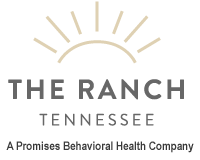Borderline personality disorder (BPD) is a complex mental health condition that affects how people think, feel, and relate to others. While the primary symptoms of borderline personality disorder are widely recognized, such as intense mood swings and struggles with interpersonal relationships, the disorder can manifest in ways that are less commonly discussed.
These uncommon symptoms, which often overlap with other mental health conditions, can make diagnosis and treatment more challenging, but equally important. For more information on personality disorder treatment, use our online contact form or call 888.483.7718.
What are the core symptoms of borderline personality disorder?
Before exploring the less typical manifestations of BPD, it’s helpful to understand its core symptoms. At least five out of nine hallmark traits must be present for a diagnosis.
The primary symptoms of borderline personality disorder include:
- Rapid and extreme mood changes that can last minutes or hours
- Intense anger that may seem disproportionate to the situation
- Impulsive, risky behaviors, such as reckless spending or substance use
- An unstable sense of self or identity
- Deep fears of abandonment, even in secure relationships
- Volatile personal relationships, often alternating between idealization and devaluation
- Persistent feelings of emptiness
- Paranoia or dissociation, especially during times of stress
- Recurrent suicidal behaviors or self-harm
These well-documented symptoms provide a diagnostic framework, yet each person with BPD experiences the condition uniquely, often exhibiting traits beyond the textbook examples.
How co-occurring conditions influence symptoms
BPD rarely exists in isolation. A high percentage of people with BPD also have at least one other mental health condition, such as depression, anxiety, bipolar disorder, or substance use disorder. This overlap can result in behaviors and challenges that aren’t immediately associated with BPD but are nonetheless linked to the condition. For instance, mood changes typical of BPD may resemble bipolar manic or depressive episodes. Similarly, impulsive behaviors may mask an underlying substance abuse issue.
This interconnectedness makes accurately identifying the signs of BPD more complex. For example, is an individual’s pattern of extreme emotional distress caused by anxiety, depression, or their underlying personality disorder? These distinctions are critical for effective treatment but not always easy to pinpoint.
Uncommon symptoms of borderline personality disorder
When we focus on the less-recognized symptoms of BPD, we start to see the diverse ways this condition manifests. Here are some examples:
Eating disorder-like behaviors
People with BPD may develop eating habits that resemble those seen in those with conditions like bulimia or anorexia. For instance, they might binge eat during moments of emotional distress or severely restrict their food intake as a form of self-punishment.
Mimicry of other mood disorders
While extreme mood swings are a hallmark of BPD, these can often appear similar to those experienced in depressive or bipolar disorders. For some people, depressive episodes may dominate their condition, leading to a misdiagnosis of major depression.
Manic-like behaviors during impulsive phases
The impulsivity associated with BPD can sometimes take the form of behaviors that mimic mania, such as engaging in unsafe sexual activities or making impulsive life decisions without considering the consequences. These manic-like symptoms can blur the lines between BPD and bipolar disorder.
Substance abuse and addiction
While substance use disorder is a separate diagnosis, those with BPD are at a higher risk of developing addictions. This may include using alcohol, recreational drugs, or even prescription medications as a means to self-medicate emotional pain.
Panic attack-like symptoms
Recurring panic attacks can also occur in people with BPD, adding another layer of complexity to the condition. The heightened emotional sensitivity of BPD can make it difficult for people to manage stress effectively, triggering physical symptoms similar to panic disorder.
Why recognizing these symptoms matters
The challenge with these lesser-known symptoms is that they can often lead to misdiagnosis or delayed treatment. A person displaying eating disorder behaviors or experiencing frequent panic attacks might initially seek treatment for those symptoms, bypassing an exploration of underlying BPD. This underscores the importance of seeing the bigger picture in mental health evaluations.
For loved ones, understanding the nuances of BPD is critical for offering meaningful support. When someone’s behavior seems unpredictable or erratic, it might not be intentional but rather a reflection of the deep and pervasive impact of BPD on their life. By learning to recognize both the classic and uncommon signs of BPD, families and caregivers can create a supportive environment that prioritizes healing.
Managing uncommon BPD symptoms with proper care
Effective treatment for BPD often includes psychotherapy, such as dialectical behavior therapy (DBT), tailored to help clients build coping skills and regulate their emotions. Medication may be prescribed to address symptoms that overlap with other conditions, such as anxiety or depression. A comprehensive approach that tackles the disorder’s core and uncommon symptoms can significantly improve quality of life.
Get support for BPD today at The Ranch
Recognizing the wide-ranging impact of BPD is the first step toward breaking free from its grip. Whether it’s managing impulsive behaviors, navigating complex emotions, or addressing co-occurring conditions, recovery is possible and highly achievable with the right resources and support.
If you or someone you care about is struggling, call us today at 888.483.7718 or use our online contact form. We’re here to help you or your loved one start the path to healing.




